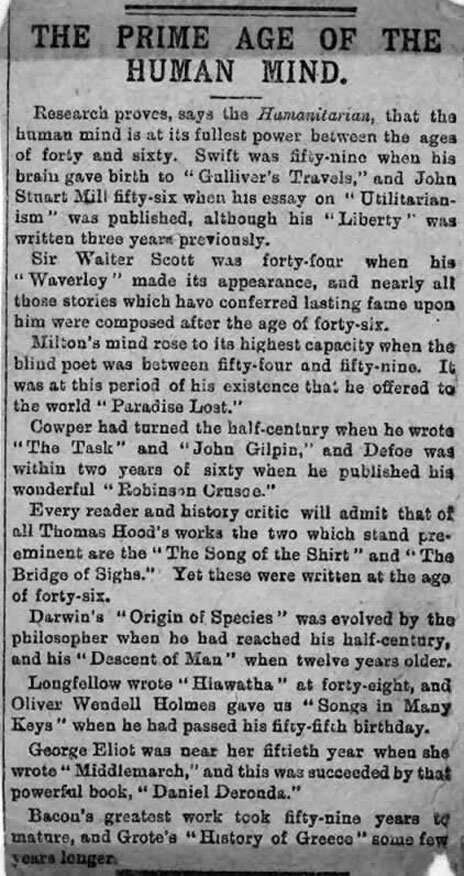The Prime Age of the Human Mind
Research proves, says the Humanitarian, that the human mind is at its fullest power between the ages of forty and sixty. Swift was fifty-nine when his brain gave birth to “Gulliver’s Travels,” and John Stuart Mill fifty-six when his essay on “Utilitarianism” was published, although his “Liberty” was written three years previously.
Sir Walter Scott was forty-four when his “Waverly” made its appearance, and nearly all those stories which have conferred lasting fame upon him were composed after the age of forty-six.
Milton’s mind rose to its highest capacity when the blind poet was between fifty-four and fifty-nine. It was at this period of his existence that he offered to the world “Paradise Lost.”
Cowper had turned the half-century when he wrote “The Task” and “John Gilpin,” and Defoe was within two years of sixty when he published his wonderful “Robinson Crusoe.”
Every reader and history critic will admit that of all Thomas Hood’s works the two which stand pre-eminent are the “The Song of the Shirt” and “The Bridge of Sighs.” Yet these were written at the age of forty-six.
Darwin’s “Origin of Species” was evolved by the philosopher when he had reached his half-century, and his “Descent of Man” when twelve years older.
Longfellow wrote “Hiawatha” at forty-eight, and Oliver Wendell Holmes gave us “Songs in Many Keys” when he had passed his fifty-fifth birthday.
George Elliot was neat her fiftieth year when she wrote “Middlemarch,” and this succeeded by that powerful book, “Daniel Deronda.”
Bacon’s greatest work took fifty-nine years to mature, and Grote’s “History of Greece” some few years longer.

